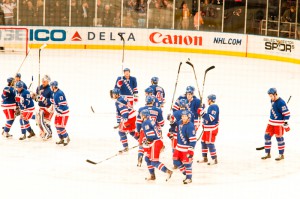
Two months ago, the cover page of the Sports Tuesday section of the New York Times had a photograph of Jets fullback Tony Richardson lying prone with two lines of acupuncture needles down each side of his back. It said that Lisa Ripi, a licensed acupuncturist, treats Richardson as well as 40 other NFL players in five cities. According to the article, “Players say her sessions are their most important treatment.” Ripi uses Japanese-style acupuncture, as opposed to traditional Chinese.
I decided to talk with two New York-based acupuncturists who treat professional athletes on a regular basis to see how the two styles differ.
For seven years, Jeff Nudelman has been treating professional athletes, primarily NFL players. He is also a supervisor at the Tri-State College of Acupuncture (80 Eighth Avenue at 14th Street) for second-year students, training them in the “trigger point” needling technique that is so favored by the athletes he treats. It is done by palpating the muscles for shortened and tense fibers that have been stressed by overworking them. Once found, one hand can then surround the fibers, while the other places a very fine needle into the belly of the constriction. This causes it to lengthen and relax and often diminishes pain. The same technique can be used on anyone for tense shoulders or anywhere there is muscular constriction and pain.
In Nudelman’s experience, however, working with athletes of this caliber is different from working on his “regular” patients. “These are professionals who have been in intense training since they were kids. They know their bodies better than anyone…if every last fiber is not finely tuned, they know exactly where it is,” he says. He usually places at least 200 needles in his patients. When I express surprise, he reminds me that an offensive lineman could be 6’7” and weigh 300 lbs. “Sometimes I will have all the needles in and a player might say, ‘Oh, you missed a muscle on the outside of my left thigh.’ They are that aware and specific.”
Nudelman treats players on Fridays before a Sunday game. That way, the soreness from a treatment will be gone. Usually, there are no heavy workouts after the treatment, only run-throughs until the game, so the athletes will be in peak form. He treats injuries on Mondays and Tuesdays after the game. He tells an injured player to “ice-up” and rest a bit before coming to see him.
Gabriel Sher, of Sher Acupuncture Center (42 E. 21st Street), has been practicing acupuncture and Chinese herbal medicine in the New York metro area for several years. He has treated numerous athletes throughout his career and currently sees many players with the New York Rangers. Sher says he gets called mainly to treat injuries, of which there are many in hockey. It is constantly hitting up against the board that causes players the most distress, especially in the lower back, groin and lower abdomen. Sher likes to use electro stimulation with the needles, as it is effective for reducing the inflammation. He favors traditional Chinese acupuncture. This differs from the Japanese acupuncture favored by Ripi in where the needles are placed and how they are manipulated.
Sher is busy with the midway hockey season. “Every player wants to play every game, no matter how injured they are,” he says. If he can reduce the pain from 80 to 20 percent, or any amount for that matter, it is a very good thing.
To be sure, there are other acupuncturists working alongside the physical therapists, chiropractors and massage therapists to keep the players fit. As an acupuncturist, I am always glad to hear that acupuncture is moving into more areas of health care — superstar athletes included!







Leave a Reply